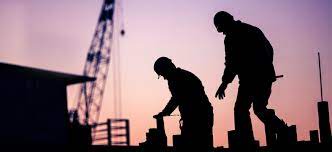Construction is one of the most dynamic industries. Every year brings new challenges and technological advancements that create new opportunities for businesses. However, this comes with a new set of risks as well. These trends will shape what construction looks like in the coming years, but they won’t be easy for everyone to navigate through.
Here’s why: As the pace of technological innovation accelerates, it becomes harder and harder for companies to keep ahead of their competitors. This means that if you operate in a niche industry with limited reach or you don’t have access to cutting-edge tools, it might not be worth your time to take on any risky ventures.
Robotics will become a standard tool in the industry

Robotics are the future of construction. In fact, more than 60% of construction workers are expected to have robotic abilities in 2022. With the rise of autonomous robotic tools, managers will have fewer employees to oversee while maintaining high-quality standards.
For example, unmanned aerial vehicles (UAVs) can send real-time information about the weather and construction site conditions. Robotic construction equipment can be remote-controlled with a computer or smartphone.
These tools can help production managers avoid downtime due to inclement weather conditions. In addition, employees will have fewer health risks while using robotic equipment, reducing the need to hire more employees.
Virtual and Augmented Reality will take over the construction site
Construction is an interesting industry to start experimenting with virtual and augmented reality. These technologies have tremendous potential to improve cost and time efficiency in the industry. An example of this would be augmented reality (AR) tools that help managers manage their teams and workers more effectively.
Many AR tools can provide real-time information about the location of workers, stairs, materials, and more. With virtual reality (VR), construction teams can simulate how their buildings or structures will look before they even finish the work. VR tools can help managers simulate how their buildings will function once the work is complete.
Self-driving vehicles will become more common
The construction industry will see a rise in the use of self-driving vehicles. While autonomous vehicles are already used in many industries, will be early adopters. The market for autonomous equipment and construction tools is expected to be worth $175 billion by 2022.
Once autonomous vehicles become more common in the industry, they will change the way work is done on the site. These vehicles can help with tasks like driving materials and equipment around a site. In addition, they can manage the human workforce and correct mistakes by generating new blueprints or drawings.
3D Printing Will Be An Everyday Thing For Construction Workers
Workers have always had to improvise with limited tools, but the arrival of 3D printing will change this. This emerging technology encompasses a range of capabilities, including the ability to create models, create prototypes, and even build production parts. In addition, 3D printing is finally becoming accessible to all construction teams.
This means that less skilled workers will have access to this technology, giving them an opportunity to level up their jobs. However, it is essential to understand the regulations and health risks associated with 3D printing. For example, it is generally not recommended to generate hazardous materials or print working parts. Furthermore, companies should ensure that workers understand the health risks associated with working with these materials.
Artificial Intelligence Will Be A Regular Feature In Construction Software
Construction companies will continue to invest in artificial intelligence. This technology, along with the advances in robotics, will make it easy for companies to optimize operations. In addition, AI will make it easier for companies to manage their risk.
For example, it can help companies identify high-risk jobs like building foundations that require more oversight. Furthermore, it can help companies manage the health risks of their workers. By analyzing data such as the physical conditions of workers or the types of work being performed, AI can create a health risk profile.
Construction companies will use AI to identify the health risks associated with different jobs. For example, construction AI can analyze the physical condition of a worker like a temperature or humidity levels. Furthermore, AI can analyze the type of work being performed to help companies manage the risk of health incidents.
Bottom line
Construction will be a challenging industry to navigate in the coming years. This is because there are many trends that will change the way work is done and how long it takes to complete a project. These trends will also disrupt the way humans collaborate with each other. To survive in this new environment, you will need to understand what is going on and adjust your strategy to address each challenge as it comes along.






